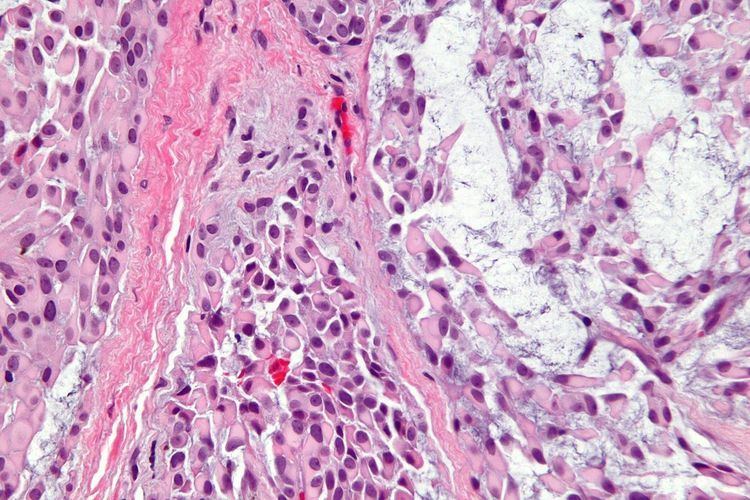 | ||
Myoepithelioma of the head and neck, also myoepithelioma, is a salivary gland tumour of the head and neck that is usually benign.
Contents
As the name suggests, it consists of myoepithelial cells. Classically, they are found in the parotid gland or palate. A similar tumor type may be found in the tongue, referred to as ectomesenchymal chondromyxoid tumor.
Diagnosis
Myoepitheliomas are diagnosed from an examination of the tissue by a pathologist.
Pathology
The myoepithelial cells may be spindled, plasmacytoid, eithelioid or clear. Tubules or epithelium are absent, or present in a small amount (<5%) by definition. Tumours with myoepithelial cells and a large amount of tubules are classified as pleomorphic adenomas (which must also contain the characteristic chondromyxoid stroma, which is normally absent in myoepithelioma).
Treatment
Benign myoepithelioma are treated with simple excision. They are less prone to recurrence than pleomorphic adenoma.
